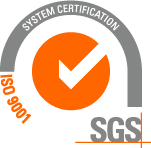Japanese firms pick Vietnam as Asia's top investment spot, with India a distant second
Of 630 respondents across East Asia, Southeast Asia, India and Australia, 35.7 percent chose Vietnam as the most promising economy for investment — far above the 17.8 percent who selected second-ranked India.
Japanese firms operating in Asia see Vietnam as the most attractive investment destination in the region, thanks to the country’s high economic growth as well as its strengthening position as a production hub and its large consumer market, an NNA survey shows.
Of 630 respondents across East Asia, Southeast Asia, India and Australia, 35.7 percent chose Vietnam as the most promising economy for investment — far above the 17.8 percent who selected second-ranked India.
Once firms establish themselves in Vietnam, they can consider expanding their operations in Cambodia, Laos and Myanmar, said an official in the nonmanufacturing sector in Vietnam.
India’s high growth potential is also attracting Japanese investors, according to the survey conducted from Nov. 26 to Dec. 9 last year.
Respondents said the Indian economy has overcome drag from the abolition of high-value bank notes and the introduction of a goods and services tax.
A respondent at a manufacturer cited the growth potential of India, citing “an increase in the population and income as well as a rise in demand for new products prompted by environmental regulations.”
Some respondents based in other countries agreed. India’s income inequality remains, but an official at a Japanese manufacturer in China praised Prime Minister Narendra Modi for his economic policies and infrastructure development, which have boosted gross economic product growth.
In the latest survey China was the third most popular investment spot, picked by 7.9 percent of respondents, but down from 12.6 percent in NNA’s 2017 poll due largely to growing uncertainty over the U.S.-China trade standoff.
Thailand came fourth with 7.3 percent. Those who chose it pointed to the nation’s economic recovery, led by the automobile sector. Thailand has “a desirable environment for starting a new business model,” an official in the nonmanufacturing sector said.
Indonesia, Southeast Asia’s largest economy, remained fifth, backed by 6.7 percent. Myanmar ranked sixth at 6.5 percent, down from 8.7 percent from a year earlier, affected by the Rohingya refugee crisis in Rakhine State.


